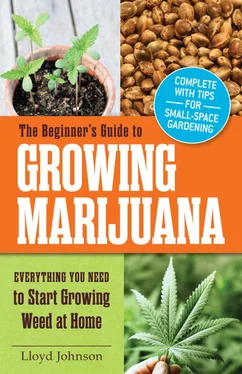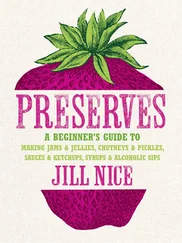Keep It Simple
Sometimes trying to hang entire plants just does not work. Either the height of your space is less than optimal, or the plants themselves have branches that fold together and inhibit air circulation. It is perfectly fine to cut the plants apart; just make certain that you keep the branches labeled.
Most problems with drying and curing can be avoided by paying close attention to the plants, checking for mold at least twice a day, adjusting the fans to assure even air circulation, and keeping temperatures cool. If your drying room is in your home, you will have to either not turn on your heat or make certain that the drying room remains unheated until the plants are finished hanging. Once the plants are safely manicured and placed into containers, always remember to breathe the bags regularly, and you will end up with well-dried and cured cannabis.
There are many benefits to keeping accurate records of your cannabis grow, and some significant risks as well. While licensed medical growers in medical cannabis states can keep their records without fear, the illegal propagator in other states should remember that these records can and will be used as evidence by law enforcement in any criminal proceeding. For that reason, you should not keep your records on your computer, and it’s best to devise a coded system. Do not leave your grow records out lying around; keep them locked up as with anything of value.
If you are growing cannabis for the first time, and only for yourself, you might well ask, “Why keep records at all?” There are several reasons. Growing, and growing well, even with a few plants, is a continual learning experience. Because there are many steps involved, having a system to complete and record the steps decreases the chance that you will overlook some. And, if you grow once a year, it is especially easy to forget details of parentage, start dates, temperature variations—any of the minutiae of the garden.
If you keep detailed notes, you are training yourself to note things like temperature and humidity levels, what day is the last frost day for your area, if plants are always smaller in a certain area of your grow site, and where the sun moves to during the outdoor cycle. These are just a few of the things that will help you understand your plants and their performance.
If you are a medical cannabis grower, recordkeeping becomes even more important. You need to monitor which strains work for which patients and note the feedback the patients give you on new hybrids or strains. This is different from recreational use because it is not whether your customers like the cannabis, but whether a particular strain alleviated their symptoms. If you have patients who have trouble articulating their experience, it is helpful to know how to ask the right questions.
If you are a seed breeder, detailed records are essential; otherwise, you are breeding blind. You can breed without notes or records, of course, but instead it can leave you not knowing how you produced something spectacular and searching, perhaps in vain, to reproduce it.
And last but not least, records of your expenses are very helpful, especially when you can be reimbursed for them. People who have never grown cannabis, or gardened in any way at all, have a naive idea that growing outdoors is “free.” They forget about water bills, fencing costs, minerals, soils, alarm systems, and other expenses of a serious garden.
The first entries for your grow book should include whatever information you have about the seed or clones you are using to start your grow. This could be a detailed profile of a certified strain you purchased or were lucky enough to have given to you. It’s also very possible that you are not sure what you have, but you might have more information than you initially think. Sources can be as nebulous as “Pete says really good smoke, he bought it in Portland and found some seeds.” You will know if Pete’s appraisal is based on recreational or medical effects. You also will be able to estimate the quality knowing what he thinks is really good smoke, another nugget of info. This information, though not ideal, is actually a reasonable beginning for the profile you will build about each plant you propagate.
In general, you want to record the source for your genetics, whether seed or clones; the dates of propagation, breeding, harvesting, curing, clipping; success or failure of breedings; final product weights; descriptions of product performance; and a daily log of temperature, feedings, waterings, and transplantings by date.
Divide your grow book into two parts. The first part is a daily garden journal where you note temperature, humidity, general activities like scheduled feedings (how much and what), and waterings or rainfall if outdoors. The second part records information about individual strains or plants and includes notes about the general appearance and performance of the plants.
Pete has told you all he knows about the origin of the seeds under discussion. It is still worth writing down this information. The purchase in Portland makes it a good guess it was grown on the West Coast, most likely in Oregon. The seeds found in the finished product would indicate most likely outdoor grown and therefore vulnerable to random, wind-borne pollination. The geographic location would give a strong chance that the seeds are from an indica hybrid; these are more viable than pure sativa types in northern Oregon’s shortish outdoor growing season.
Your initial note on this plant profile would still be “Pete says really good smoke, he bought it in Portland and found some seeds,” but you might add “possibly indica” and put the date you received the seed. If Pete can remember, put the date he found the seed. This will give you some approximation of the seed’s age. If, for example, you got the seed in 2006 and are trying to germinate it in 2010, you would know that less of the seed is likely to germinate (having passed the three-year optimum mark), and soak more seeds from the beginning. Then you would note how many actually germinate and how soon.
Once you have seedlings, you will note their type of leaf formation and whether it is typical of a sativa or an indica. Until your seedlings sex, you should group them under an easy to remember name that also gives information, like Pete’s Portland Pot. The strain source, should Pete’s recommendation prove to be true and you end up propagating and creating a strain from his seeds, will always be “PPP 2006.”
Creating Strain Profiles
An important part of your grow book will be a profile of each strain group. If you are using clones, you will have the same name for each plant of an identified strain, as they are genetically identical. Some growers number each plant within the strain group—for example, White Widow 1, White Widow 2—and track their individual performance that way. This will give you valuable information about which spots are best in your outdoor grow or perhaps areas in your indoor grow rooms that need adjustment to the lighting or ventilation. The plants are going to act with variation, and your notes will help you figure out why.
Hybrids and Naming Plants
If you have bred from seed and created hybrids, the best way to keep track is to name each individual plant. Each is unique, unlike the clones. Ideally, their names will reflect what you know about the origins. If we go back to Pete’s seeds, let’s say you have germinated and raised ten seedlings to the point of sexing. You now have six females and four males. If you want the pollen, pick the strongest, healthiest male and isolate him. There is no need to name him; he is still “PPP,” but the year changes to the current grows. Therefore, “PPP Male 2010” is sufficient for knowing your pollen source. The other males can be destroyed. You will note in your book that they were terminated as opposed to being casualties.
Читать дальше












